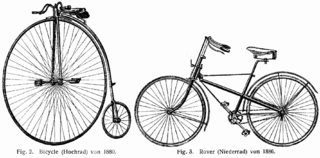Related Research Articles

In business theory, disruptive innovation is innovation that creates a new market and value network or enters at the bottom of an existing market and eventually displaces established market-leading firms, products, and alliances. The concept was developed by the American academic Clayton Christensen and his collaborators beginning in 1995, and has been called the most influential business idea of the early 21st century. Lingfei Wu, Dashun Wang, and James A. Evans generalized this term to identify disruptive science and technological advances from more than 65 million papers, patents and software products that span the period 1954–2014. Their work was featured as the cover of the February 2019 issue of Nature and was selected as the Altmetric 100 most-discussed work in 2019.

A business model describes how an organization creates, delivers, and captures value, in economic, social, cultural or other contexts. The process of business model construction and modification is also called business model innovation and forms a part of business strategy.
The Wharton School of the University of Pennsylvania is the business school of the University of Pennsylvania, a private Ivy League research university in Philadelphia, Pennsylvania. Generally considered to be one of the most prestigious business schools in the world, the Wharton School is the world's oldest collegiate business school, having been established in 1881 through a donation from Joseph Wharton.

August-Wilhelm Scheer is a German Professor of business administration and business information at Saarland University, and founder and director of IDS Scheer AG, a major IT service and software company. He is known for the development of the Architecture of Integrated Information Systems (ARIS) concept.
Peter Pin-Shan Chen is a Taiwanese American computer scientist. He is a (retired) distinguished career scientist and faculty member at Carnegie Mellon University and Professor Emeritus at LSU. He is known for the development of the entity–relationship model in 1976.
*≈≈≈≈
An operating model is both an abstract and visual representation (model) of how an organization delivers value to its customers or beneficiaries as well as how an organization actually runs itself.
François B. Vernadat is a French and Canadian computer scientist, who has contributed to Enterprise Modelling, Integration and Networking over the last 25 years specialising in enterprise architectures, business process modelling, information systems design and analysis, systems integration and interoperability and systems analysis using Petri nets.

David Michael Gann CBE, the son of John and Hilary Gann, was born in Liverpool in 1960 and at the age of two his family moved to Didcot, then to Newbury where he went to St Bartholomew’s School. After studying a BSc in Building Construction and Management at the University of Reading, he obtained a MSc in Science, Technology and Industrialisation and a PhD from the University of Sussex. He currently lives in Hove, East Sussex.

David Ing is a Canadian systems scientist, business architect, management consultant, and marketing scientist. He served as President of the International Society for the Systems Sciences (2011-2012).
David L. Hawk is an American management theorist, architect, and systems scientist, specializing in climate change as environmental deterioration. From 1981 to 2010 he was professor of management in the School of Management at the New Jersey Institute of Technology (NJIT) and professor of architecture at the College of Architecture and Design at NJIT.
Stephen J. Andriole is an American information technology professional and professor at Villanova University who has designed and developed a variety of interactive computer-based systems for industry and government, from positions in academia, government and industry.
Mark Stephen Fox is a Canadian computer scientist, Professor of Industrial Engineering and Distinguished Professor of Urban Systems Engineering at the University of Toronto, known for the development of Constraint Directed Scheduling in the 1980s and the TOVE Project to develop an ontological framework for enterprise modeling and enterprise integration in the 1990s.
Roelf Johannes (Roel) Wieringa is a Dutch computer scientist who was a Professor of Information Systems at the University of Twente, specialized in the "integration of formal and informal specification and design techniques".
Johannes Adrianus Petrus (Jan) Hoogervorst is a Dutch organizational theorist, business executive, management consultant, and Professor Enterprise Governance and Enterprise Engineering at the University of Antwerp, known for his work in the field of enterprise engineering.

J.B.F. (Hans) Mulder is a Dutch computer scientist, Venture manager in the IT industry, and Professor at the University of Antwerp, known for his work on enterprise engineering.

Jeanne Wenzel Ross is an American organizational theorist and principal research scientist at MIT Sloan School of Management and the MIT Center for Information Systems Research (CISR), specializes in Enterprise Architecture, ICT and Management. She is known for her work on IT governance, and Enterprise architecture.
Peter Weill is an Australian computer scientist and organizational theorist, Professor of Information Systems Research at the MIT Sloan School of Management, and chairman of the MIT Center for Information Systems Research (CISR).
Serguei Netessine is a scientist and educator. He is Senior Vice Dean for Innovation and Global Initiatives and Dhirubhai Ambani Professor of Entrepreneurship and Innovation at the Wharton School of Business, University of Pennsylvania. Previously, he was Professor of Global Technology and Innovation at INSEAD and the Research Director of INSEAD-Wharton alliance. He is best known for his work in Business Model Innovation, Operational Excellence and Supply Chain Management.
Guy Doumeingts is a French engineer, Emeritus professor at the University of Bordeaux 1 and former Director of "Laboratoire d’Automatique, Productique Signal et Image" control theory, known for the development of the GRAI method and his contributions to the field of Enterprise modelling.
References
- ↑ Lankhorst, Marc. Enterprise architecture at work: Modelling, communication and analysis. Springer, 2013.
- ↑ Op 't Land, Martin, ed. Enterprise architecture: creating value by informed governance. Springer, 2009.
- ↑ About Prof. David Robertson at robertsoninnovation.com. Accessed November 19, 2013.